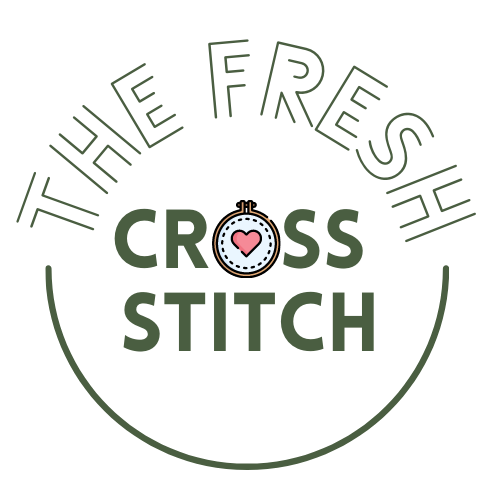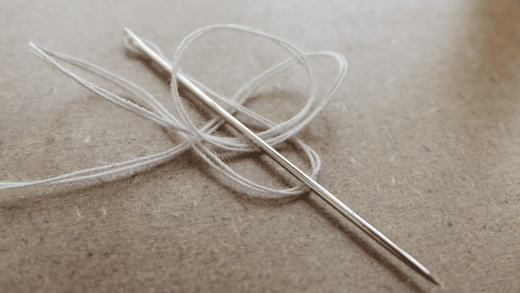Die Wahl der richtigen Nadel ist für jedes Handarbeitsprojekt entscheidend. Da für Kreuzstich und Stickereien nur drei grundlegende Werkzeuge benötigt werden , ist es besser, diese Werkzeuge mit Bedacht auszuwählen. Von Größe und Form bis hin zu Material und Typ trägt jeder Aspekt einer Nadel zu ihrer Funktionalität und Eignung für Ihre Kreuzstich- und Stickprojekte bei.
In diesem Artikel werde ich Ihnen einen ausführlichen Nadelführer geben , wobei ich mich auf Nadeln für Kreuzstich und Stickereien konzentriere und Ihnen dabei helfen werde, ihre Eigenschaften und Anwendungen zu verstehen. Egal, ob Sie an einem einfachen Muster oder einem aufwendigen Design arbeiten, das Verständnis Ihrer Nadeloptionen wird Ihre Bastelerfahrung und -ergebnisse verbessern.
Grundlegende Konzepte zu Nadeln
Das Verständnis der Grundlagen von Nadeln ist der erste Schritt bei der Auswahl der richtigen Nadel für Ihr Projekt. Nadeln gibt es in verschiedenen Formen, Größen und Materialien, jede ist für bestimmte Aufgaben konzipiert.
Die Hauptbestandteile einer Nadel sind Spitze, Schaft und Öhr:
- Die Spitze ist das Ende der Nadel, das den Stoff durchsticht.
- Der Schaft ist der Körper der Nadel.
- Das Öhr ist das Loch, durch das der Faden läuft.
Wenn Sie eine Nadel für Kreuzstich und Stickereien suchen, ist dies
- Eine abgerundete Spitze : Die Nadelspitze sollte abgerundet und nicht spitz sein. So lässt sie sich leichter durch die Löcher Ihres Stoffes schieben und Sie vermeiden, dass sie am Stoff hängen bleibt.
- Ein Schaft, der Ihrer Aida-Stichzahl entspricht : Nadeln gibt es in unterschiedlichen Größen (die gleich erklärt werden) und es gibt einige grundlegende Faustregeln für die Auswahl einer Nadelgröße, die gut zu Ihrem Stoff passt.
- Ein größeres Öhr : Kreuzstich- und Stickgarn ist dicker als Nähgarn, daher benötigen Sie eine Nadel mit einem größeren Öhr. Ist es unmöglich, den Faden durch eine Nadel mit kleinem Öhr zu bekommen? Nein, aber wenn Sie nicht den Verstand verlieren möchten, empfehle ich Ihnen, einfach eine richtige Nadel zu kaufen und diesen Teil zu überspringen.
Leitfaden zur Nadelgröße: Verstehen Sie die Codes und ihre Beziehung zur Aida-Stichzahl
Die Größe der Nadeln wird anhand von Zahlen bestimmt . Sie haben beispielsweise wahrscheinlich Kreuzstichnadeln mit Codes gesehen, die zwischen 18 und 26 variieren. In diesem Fall weisen Kreuzstich- und Sticknadeln mit kleineren Zahlen auf größere Nadeln hin. Beispielsweise ist eine Nadel der Größe 18 größer als eine Nadel der Größe 28.
Je höher die Aida-Zahl, desto größer die Nadelstärke.
Größentabelle für Kreuzstich- und Sticknadeln
Die Größe der Nadel im Verhältnis zum Stoff und ihre Anzahl. Als allgemeine Regel gilt: Je niedriger die Stoffnummer, desto kleiner die Nadelgröße.
| Aida-Anzahl | Nadelstärke |
| 6 zählen | Größe 18 |
| 8 zählen | Größe 20 |
| 11 zählen | Größe 22 |
| 14 zählen | Größe 24 |
| 16 zählen | Größe 26 |
| 18 zählen | Größe 28 |
Denken Sie daran, dass Sie sich die verschiedenen Kreuzstich-Aida-Arten und ihre Anzahl in meinem Blog ansehen können.
Nadeltypen je nach Verwendungszweck
Kreuzstichnadeln
Kreuzstichnadeln , auch Gobelinnadeln genannt, haben eine stumpfe Spitze und ein großes Öhr. Die stumpfe Spitze verhindert, dass die Nadel die Fasern des Stoffes, der normalerweise Aida-Stoff oder Leinen ist, aufspaltet. Das große Öhr bietet Platz für mehrere Stränge Stickgarn. Die üblichen Größen für Kreuzstichnadeln reichen von 22 bis 28, wobei die Größen 24 und 26 am beliebtesten sind.
Sticknadeln
Sticknadeln , oft auch Crewel-Nadeln genannt, haben eine scharfe Spitze und ein mittelgroßes Öhr. Die scharfe Spitze ermöglicht Präzision und Leichtigkeit beim Arbeiten mit dicht gewebten Stoffen. Diese Nadeln gibt es in vielen verschiedenen Größen, normalerweise von 1 bis 10, wobei die Größen 7 und 8 für allgemeine Stickarbeiten beliebt sind . Das mittelgroße Öhr bietet Platz für Stickgarn, Perlgarn und andere Spezialfäden.
Nähnadeln
Nähnadeln, auch Sharps genannt, haben eine scharfe Spitze und ein kleines, rundes Öhr. Sie sind für allgemeine Handnäharbeiten konzipiert und in verschiedenen Größen für unterschiedliche Stoffe und Fäden erhältlich. Die Größen reichen von 1 bis 12, wobei die Größen 7 und 8 für das alltägliche Nähen üblich sind . Sharps sind vielseitig und können zum Säumen, Ausbessern und für andere grundlegende Näharbeiten verwendet werden.
Nadeltypen nach Material
Neben der Wahl der richtigen Größe können Sie sich beim Kauf auch am Nadelmaterial orientieren. Wenn Sie Kreuzstiche machen, sticken oder nähen, werden Sie schnell merken, wie wichtig es ist, dass Ihre Nadel robust und langlebig genug ist .
Nadeln können aus unterschiedlichen Materialien hergestellt werden, die jeweils einzigartige Eigenschaften aufweisen:
- Stahlnadeln: Der gebräuchlichste Typ, bekannt für seine Haltbarkeit und glatte Oberfläche, die ein leichtes Durchdringen des Stoffes ermöglicht.
- Vergoldete Nadeln: Ermöglichen ein sanftes Stickerlebnis und verursachen weniger wahrscheinlich allergische Reaktionen. Sie sind außerdem anlaufbeständig.
- Vernickelte Nadeln: Langlebig und korrosionsbeständig, daher eine gute Wahl für den häufigen Gebrauch.
- Nadeln aus Kunststoff oder Bambus: Leicht und sanft zu den Händen, geeignet für Kinder oder Menschen mit Arthritis.
Welche Nadeln eignen sich am besten für Kreuzstich und Stickereien?
Welche Nadeln sich am besten für Kreuzstich und Stickereien eignen, hängt von Ihrem jeweiligen Projekt und Ihren persönlichen Vorlieben ab. Für Kreuzstiche sind Gobelinnadeln (Größe 24 oder 26) aufgrund ihrer stumpfen Spitze und des großen Öhrs ideal. Für Stickereien sind Crewel-Nadeln (Größe 7 oder 8) aufgrund ihrer scharfen Spitze und des mittleren Öhrs eine ausgezeichnete Wahl, da sie präzises Nähen mit einer Vielzahl von Fäden ermöglichen.
Goldene Gobelinnadeln von DMC
DMC ist eine führende Marke, wenn es um Kreuzstich- und Stickgarn geht, aber auch um Nadeln und andere Materialien für diese Künste. Ihre Nadeln sind von hoher Qualität und es gibt sie in einer großen Auswahl an Größen und Materialien. Diese Goldnadeln gibt es in verschiedenen Größen und sie sind eine Top-Empfehlung für Kreuzstich und Stickereien.
Ein letzter Tipp: Benutzen Sie einen Nadelhalter!
Nadeln halten ewig, wenn man sie nicht verliert. Das ist ihr einziger Nachteil: Da sie so klein sind, ist es wahrscheinlicher, dass man sie verliert , als dass sie kaputtgehen (was ich noch nie erlebt habe).
Mit einem Nadelhalter können Sie sie immer im Blick behalten. Dieses einfache Werkzeug ist einfach ein Magnet, an dem Sie die Nadel anbringen können, und sie bleibt dort, wo sie ist . Da es sich um ein preisgünstiges Werkzeug handelt, empfehle ich Ihnen, einen zu kaufen, damit Sie alle Ihre Nadeln an ihrem Platz halten können. Und außerdem sind sie supersüß!










